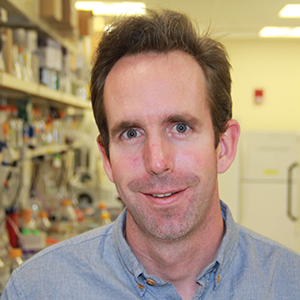
Lipids, lipids everywhere!
Lipids not only taste delicious (at least in our opinion) but are the major components of biological membranes and play essential roles in most aspects of human biology. In fact, if we look closely at the lipids and membranes of eukaryotes and prokaryotes, we see they contribute to fundamental roles in compartmentalizing cells, stress responses, metabolism, gene regulation, inflammation, and activating both cell protective and cell destructive mechanisms.
As such, the study of lipids and membranes remains a critical and emerging area for cutting-edge research — one that has great potential to impact human health and the understanding and treatment of diseases.
Our symposia at Discover BMB, the annual meeting of the American Society for Biochemistry and Molecular Biology, in Seattle in March will bring together leading investigators in lipid metabolism and membrane function in replication of microorganisms and viruses, communicate novel protein structural information in lipid metabolism and transport, and promote the understanding of membrane structure and biophysics in cell physiology.
Keywords: Enzyme regulation, lipid droplets, lipid domains, membrane structure and tension, sphingolipids, infectious disease.
Who should attend: Lipid and membrane enthusiasts and anyone interested in learning more about lipid metabolism, lipid–protein interactions or membrane structure.
Theme song: “Insane in the Membrane” by Cypress Hill.
This session is powered by Hass avocados, rich in healthy fats.
Speakers
New roles for lipids in microorganisms and viruses
Michael Airola (chair), Stony Brook University
Robert V. Stahelin, Purdue University
Elizabeth Johnson, Cornell University
Eric A. Klein, Rutgers University–Camden
Nihal Altan–Bonnett, National Institutes of Health
Molecular insight into lipid metabolism and transport
Abdou Rachid Thiam (chair), Centre national de la recherche scientifique, Ecole Normale Supérieure de Paris
Michael Airola, Stony Brook University
Angeline Lyon, Purdue University
Eric Ortlund, Emory University School of Medicine
Saskia Neher, University of North Carolina at Chapel Hill
Membrane structure and dynamics
Robert Stahelin (chair), Purdue University
Abdou Rachid Thiam, Centre national de la recherche scientifique, Ecole Normale Supérieure de Paris
Sarah Keller, University of Washington
Suzanne Scarlata, Worcester Polytechnic Institute
Ilya Leventhal, University of Virginia
The complete list
Learn about all 11 symposia planned for Discover BMB 2023:- Protein Machines and Disorder
- Regulation of RNA
- Organelles, Mechanisms and Phase Properties of Cellular Quality Control
- Lipid Dynamics and Signals in Membrane and Protein Structure
- Frontiers in Carbohydrate Synthesis and Recognition
- Bias In, Bias Out in Data Science
- Cell Signaling — New Tools and Emerging Concepts
- Education and Professional Development
- Biochemistry of Elemental Cycling
- Advances in Organismal and Cellular Metabolism
- Artificial Intelligence and Machine Learning in Structural Biology, Drug Design and Systems Biology
Enjoy reading ASBMB Today?
Become a member to receive the print edition four times a year and the digital edition monthly.
Learn moreGet the latest from ASBMB Today
Enter your email address, and we’ll send you a weekly email with recent articles, interviews and more.
Latest in Science
Science highlights or most popular articles

Using DNA barcodes to capture local biodiversity
Undergraduate at the University of California, Santa Barbara, leads citizen science initiative to engage the public in DNA barcoding to catalog local biodiversity, fostering community involvement in science.

Targeting Toxoplasma parasites and their protein accomplices
Researchers identify that a Toxoplasma gondii enzyme drives parasite's survival. Read more about this recent study from the Journal of Lipid Research.

Scavenger protein receptor aids the transport of lipoproteins
Scientists elucidated how two major splice variants of scavenger receptors affect cellular localization in endothelial cells. Read more about this recent study from the Journal of Lipid Research.

Fat cells are a culprit in osteoporosis
Scientists reveal that lipid transfer from bone marrow adipocytes to osteoblasts impairs bone formation by downregulating osteogenic proteins and inducing ferroptosis. Read more about this recent study from the Journal of Lipid Research.

Unraveling oncogenesis: What makes cancer tick?
Learn about the ASBMB 2025 symposium on oncogenic hubs: chromatin regulatory and transcriptional complexes in cancer.

Exploring lipid metabolism: A journey through time and innovation
Recent lipid metabolism research has unveiled critical insights into lipid–protein interactions, offering potential therapeutic targets for metabolic and neurodegenerative diseases. Check out the latest in lipid science at the ASBMB annual meeting.


